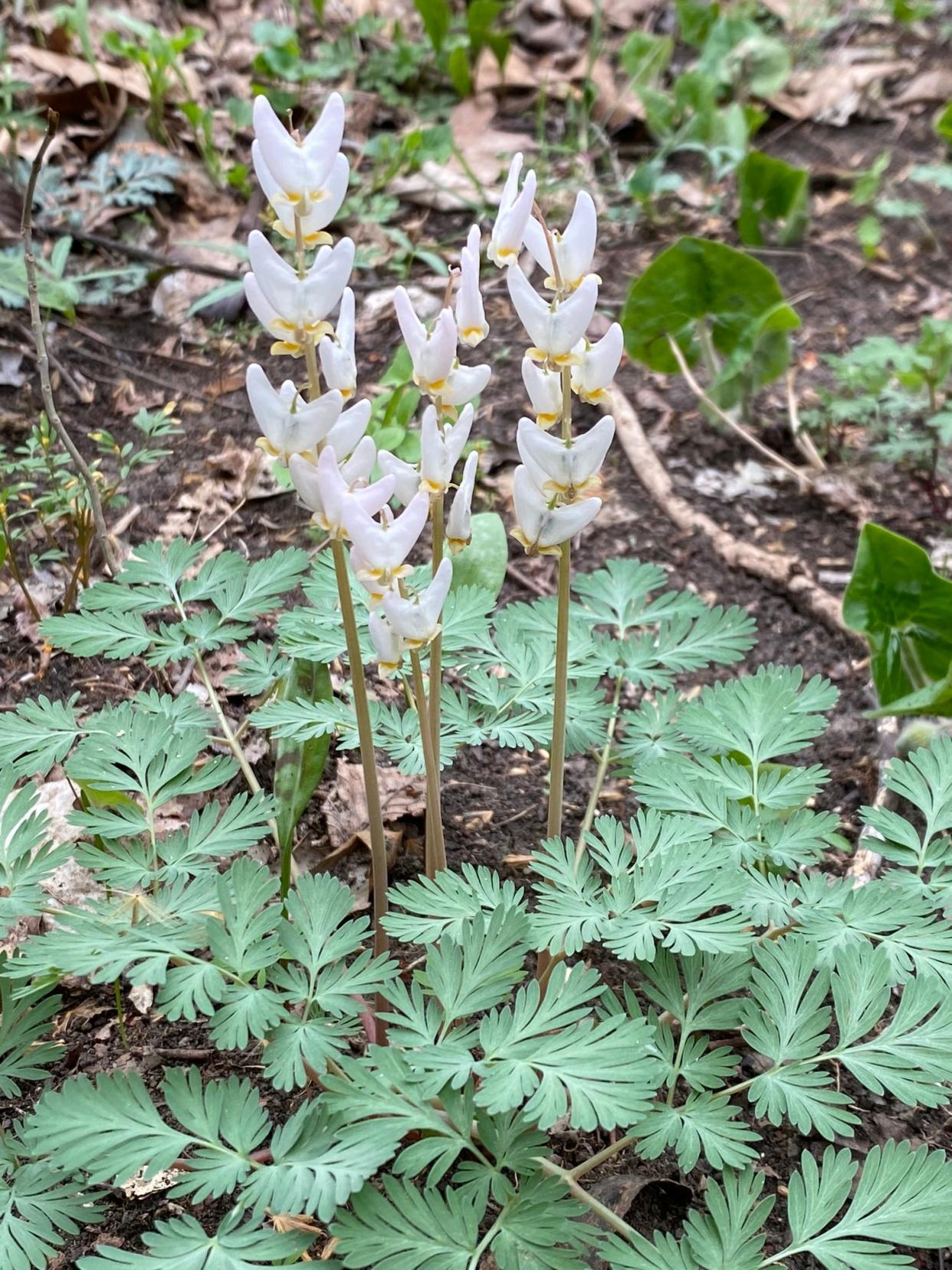Showy and fragrant Dutchman's breeches a delightful native plant blooming March to May

Editor’s note: Once a month OSU Extension Master Gardener Volunteers in Franklin County profile a plant that occurs naturally in central Ohio.
Nothing says spring like clean laundry hanging on a line, blowing in the gentle breeze. Dicentra cucullaria is a delicate native herbaceous perennial that puts on a similar show, no washing required. It’s found naturally along rocky and rich, moist deciduous forest slopes and ravines, helping to stabilize woodland soil. It is often found among a diversity of species including bloodroot, hepatica, lady fern, maidenhair fern and bellwort.
Showy, deeply cut, gray-green, basilar, fernlike leaves make up the base of the plant from which rises a tan- to reddish-brown leafless arching stem bearing a row of fragrant white pantaloon-shaped flowers with yellow tips (or spurs), giving inspiration for its common name of Dutchman’s breeches. The three-quarter-inch flowers are white or sometimes slightly pink and develop into an oblong pea-pod shaped fruit, up to an inch in length containing several seeds.
More: Native Plant: Partridgeberry, a vine that grows near the ground, a nice addition to gardens
Propagation can be done by division of bulbous crowns or root cuttings in spring or autumn. Seeds need moist, cold stratification to germinate.
Dicentra cucullaria prefers well-drained, slightly acidic to neutral pH, humus-rich soil, tolerates clay and grows best in shade to partial shade with dappled sunlight. Spread and height are 6 to 12 inches. It’s a spring ephemeral, blooming March to May and goes dormant by mid-summer.
In home gardens, placement in a partial shade area with later blooming perennials would be ideal to provide consistent seasonal interest. Dicentra cucullaria is resistant to deer and rabbits. All parts of this plant are toxic when consumed in large quantities.
Dutchman’s breeches provides an early source of pollen and nectar for bumblebees, honeybees, mason bees and anthophorid bees, as well as some butterflies and skippers. Queen bees can pry open the complex flowers and feed on nectar with their long tongues, transferring pollen along the way. Worker and cuckoo bees access nectar by the perforations in the spurs. Ants are attracted to the protein-rich fleshy seed covering, using it for food and benefitting the plant by spreading and “planting” new seeds each summer.
Growing requirements
Hardiness zones: 3-7, native to eastern North America and a few northwestern states
Sun: partial shade, dappled sunlight
Water: moist, but well-drained
Soil: humus rich, loam or clay acidic to neutral soils
Maintenance: none, dies back in mid to late summer
Propagation: easy to grow by seed or splitting plant rhizome clump in late fall or early spring
Pests and disease: minimally susceptible to aphids, deer and rabbit resistant, all parts are toxic when ingested by mammals
This article originally appeared on The Columbus Dispatch: Dutchman's breeches can provide visual interest in shade gardens

